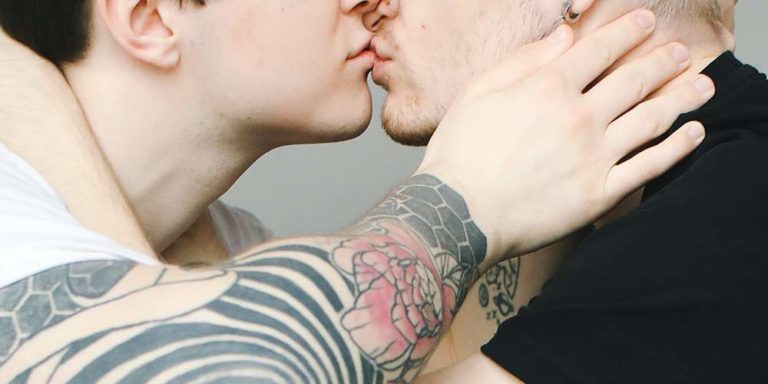

Cool: Bisexual singer, songwriter and actress Tayla Parx releasing the single “Homiesexual,” which features lines such as “And that’s just exactly why I only fuck with homies, I’m a homiesexual / But if I let you kick it, don’t go feeling special.” Tayla has helped pen some of the biggest tracks of the past few years — including Ariana Grande’s “Thank U, Next” and Panic! At The Disco’s “High Hopes” — and her “Homiesexual,” released in 2019, is a straight-up bop. Take a listen:
Possibly not as cool: Pretending you’re gay for the social media clout.
My gut reaction to the “homiesexual” trend, which seems to live predominantly on TikTok, was “oh no.” These videos of young, straight guys show them sharing beds, spooning, swapping kisses and generally being overly affectionate with one another. The effect is somewhere between twee and borderline exploitative — most of the guys are minors and, as previously mentioned, straight. Queerbaiting has long been a tactic of the entertainment industry to get LGBTQ folk invested in works that don’t actually cater to us. (Most recently, see that recent episode of Supernatural.) But this homiesexual trend doesn’t seem to be baiting queer folks into viewership, but instead … female followers.
Connor Robinson, a TikTok star who partakes in the homiesexual trend, says: “Girls are attracted to two attractive guy TikTokers with massive followings showing a sexual side with each other.” With nearly 1 million followers on TikTok, Robinson estimates that 90% of them are female.
Ercan Boyraz, head of influencer management at Yoke Network, believes these videos are “a super effective way for aspiring social media stars to accumulate more followers, as many young women enjoy watching two guys mess around together.” In an era that revolves around garnering the most followers, getting the most likes, having the most desirable body and living the most picturesque life, there is undoubtedly enough material on the psychology of social media trends to write a thesis.
Often, when and if there is harm done, that harm is circular, rather than linear — it isn’t enough to just say that this bizarre appeal of queerness as a costume to gain followers could be problematic. How did we get here? How do we choose to frame perpetrators of these trends with the knowledge that they’re minors?
What’s worse — young men expressing affection toward one another to gain popularity among young women, or the way adults publicly talk about these young men (the New York Times article on the homiesexual trend describes Robinson as “a 17-year-old British TikTok star with rosy cheeks and a budding six-pack”)? And what is the effect of this trend on the LGBTQ community?
An op-ed in The Emory Wheel dives into the nuances of “homiesexuality,” namely what it means to embrace a softer, more affectionate masculinity versus commodifying the queer experience. Sophia Ling writes, “While redefining heterosexuality, as well as accepting and normalizing fluid sexuality warrant praise, these cannot remain mere side effects of popularity-seeking behavior on social media.”
Rebelling against toxic, heteronormative masculinity is not a bad thing in and of itself — in fact, this rejection of the norm is something we ought to encourage as a society. But not when it comes at the price of the queer experience.
That brings us to an even more difficult question: Who decides whether actual LGBTQ folk are negatively impacted by a particular trend? The obvious answer is LGBTQ people. The reality of the situation is that you’ll be hard-pressed to find an entire community of people agreeing 100% on one thing.
Homiesexual T-shirts have already started to appear on Amazon, advertised as the “perfect gift [for] reality fans, queer and quirky people, beautiful, elegant and fashionable.” Just like I don’t love when mega-corporations decide to care about the LGBTQ community for a single month in the summer in order to get our money, I don’t love this either.
The most popular definition of the term “homiesexual” on Urban Dictionary is “It’s a sexuality where we homies but it aint gay cause we’re just homies.”
While TikTok seems to be the center of this trend, there are #homiesexual tags on both Instagram and Twitter as well.
Ah yeah. The #homiesexual as guys like to call it
— SuperNovan 💫 (@malin_hall) November 29, 2020
A quick look into the #homiesexual tag on TikTok yields over 55 million results.
What are your thoughts on the homiesexual trend at large? Do you think it does more harm than good?
This article was originally published on January 31, 2020. It has since been updated.